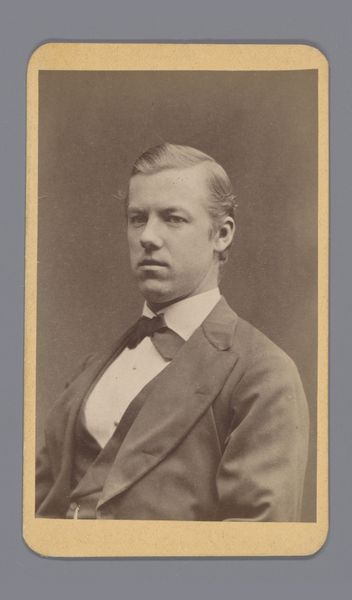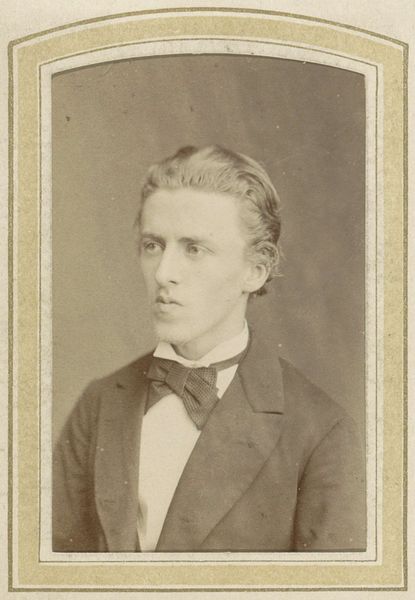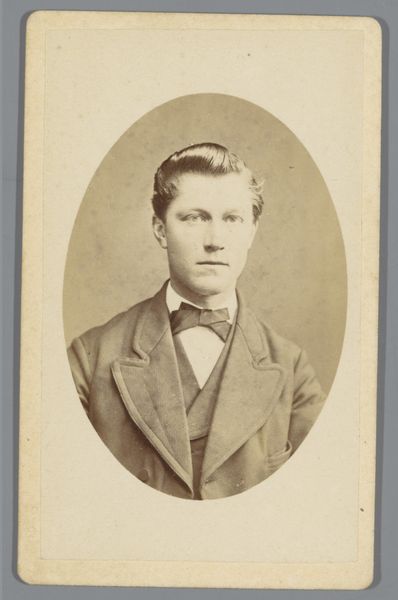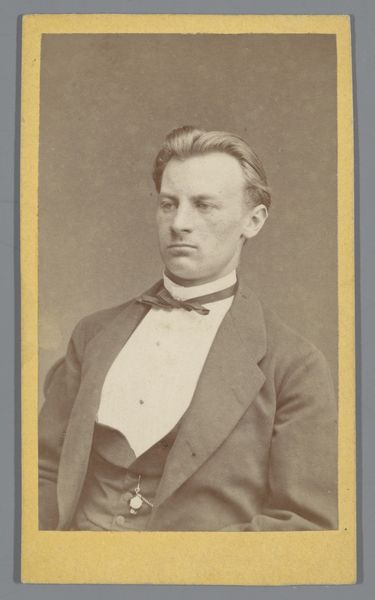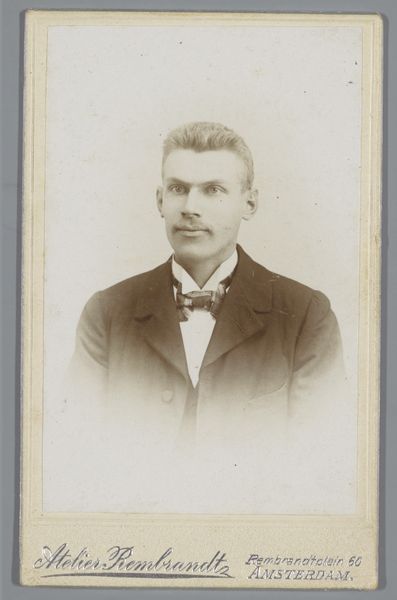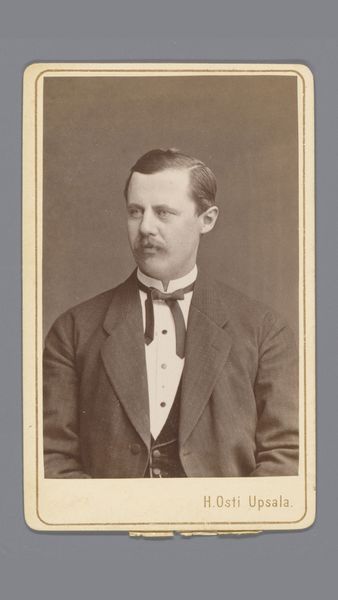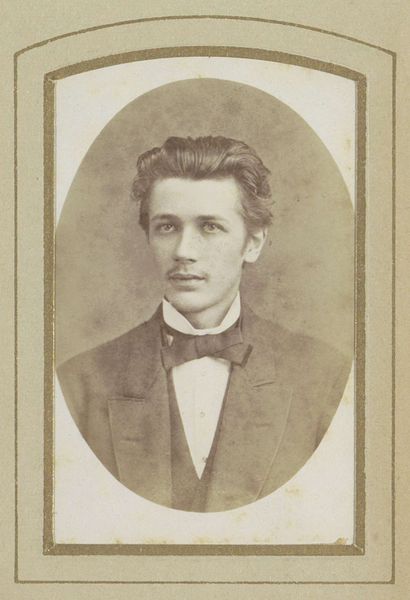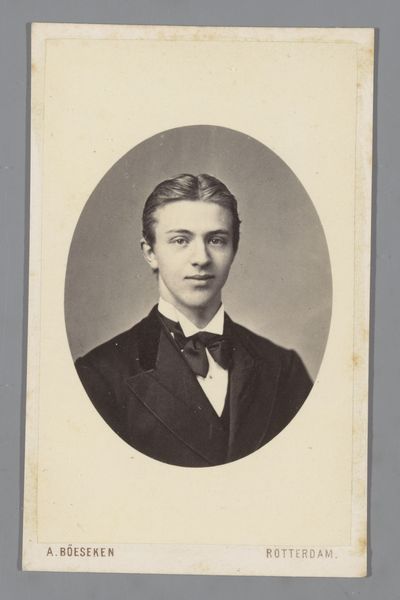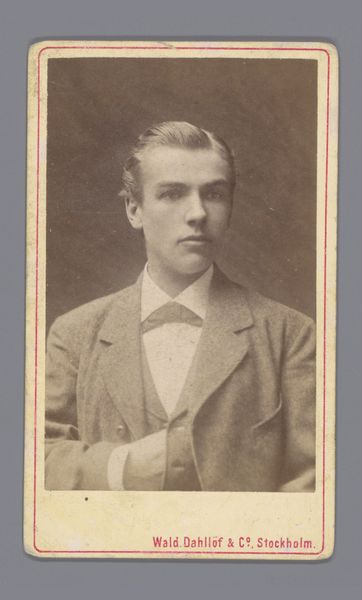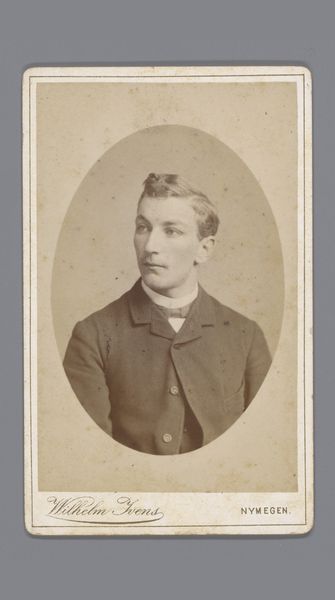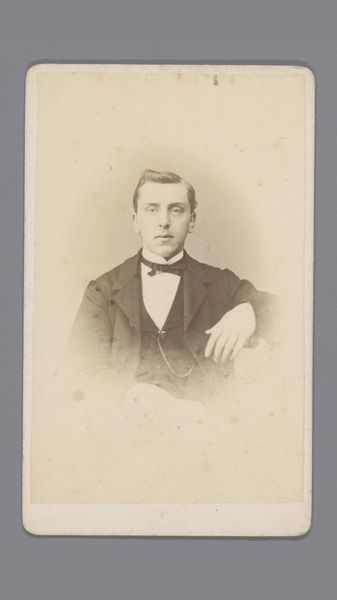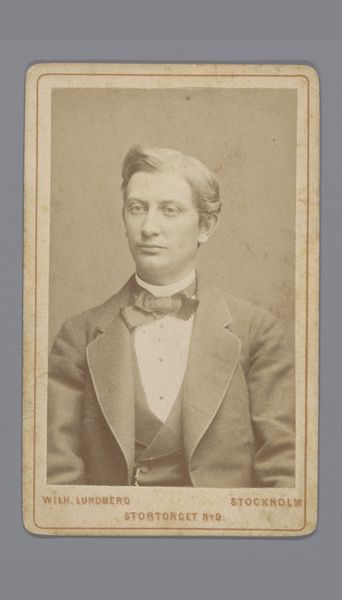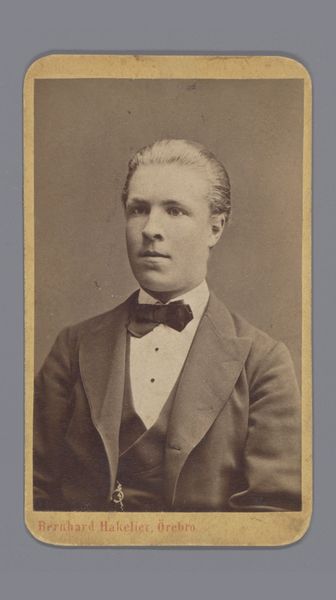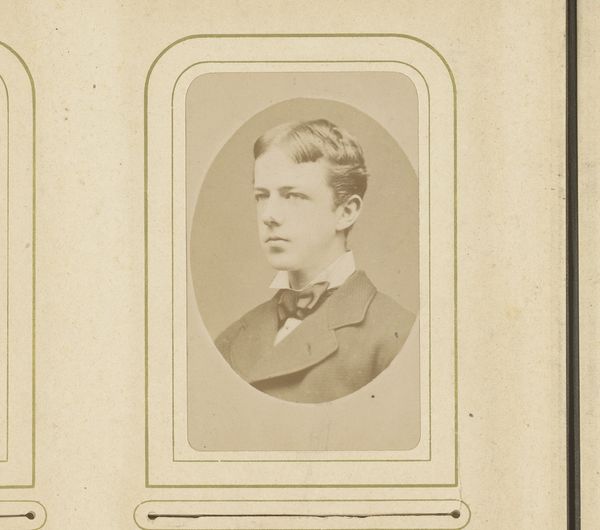
photography, gelatin-silver-print
#
portrait
#
16_19th-century
#
photography
#
historical photography
#
historical fashion
#
gelatin-silver-print
#
19th century
#
history-painting
Dimensions: height 106 mm, width 63 mm
Copyright: Rijks Museum: Open Domain
Curator: This gelatin-silver print, captured between 1872 and 1880, presents a formal "Portret van een onbekende man," or Portrait of an Unknown Man, currently held at the Rijksmuseum. Editor: It's striking. The sepia tones imbue it with such a powerful sense of Victorian austerity, but it’s also quite intimate, as if he’s looking directly at you. What do we know about this image? Curator: The photographer was Gösta Florman, operating out of Stockholm. The carte-de-visite format was immensely popular then, allowing for the relatively affordable circulation of images across social circles. Think of it as a precursor to the profile picture, signaling one's social standing and personal identity. Editor: Interesting. Given the sitter’s dress - his high collar, dark waistcoat, and suit - do you feel he’s from a specific social strata, possibly a budding businessman? I wonder who tailored this suit. Curator: It does suggest a certain level of affluence. But even beyond his attire, consider the societal implications of being able to afford to sit for a portrait. Early photography democratized image production, to a point, though this kind of access wasn’t accessible to everyone equally. Gender and race played enormous roles here. Editor: Of course. And there’s also the material cost of producing a gelatin-silver print – the silver, the gelatin emulsion, the skilled labor needed in the darkroom. All of these processes rely on the exploitation of labor. I’m intrigued by how that tension between accessibility and material constraints plays out in the art. Curator: Right, it embodies that moment of transition—where photography started democratizing representation yet retained markers of class. Now the very accessibility creates new dimensions of equality in our view. The materiality itself, a reminder of these tensions that speak to access and power. Editor: So, after spending time thinking about labor, materials, and production of this image, what started out as an interesting, evocative photograph, transformed into so much more. I appreciate having this window into not only 19th-century photography but class politics too. Curator: It serves as a prompt, urging us to see these archived portraits not just as relics of a bygone era but also as echoes that reveal much about the politics of representation. These are social dynamics that, in many respects, continue shaping our world.
Comments
No comments
Be the first to comment and join the conversation on the ultimate creative platform.
